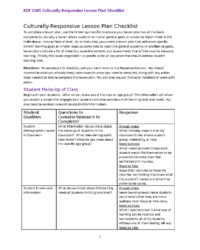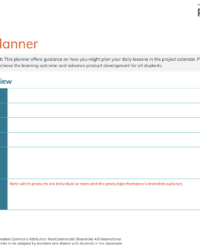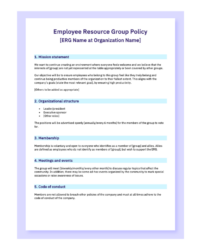Embarking on a service learning journey can be one of the most rewarding experiences for both educators and students. It’s more than just volunteering; it’s a powerful pedagogical approach that integrates meaningful community service with instruction and reflection to enrich the learning experience, teach civic responsibility, and strengthen communities. The beauty of service learning lies in its ability to bring academic concepts to life, showing students the tangible impact of their knowledge and efforts in the real world.
However, orchestrating a successful service learning project requires careful planning and a structured approach. That’s where a well-designed service learning lesson plan template becomes an invaluable tool. It provides a roadmap, ensuring all essential components are considered, from learning objectives and community needs to project implementation and crucial reflection activities. This structured framework helps educators streamline the planning process, ensuring a comprehensive and impactful experience for all involved.
Deconstructing the Core Components of a Powerful Service Learning Plan
A truly effective service learning project doesn’t just happen; it’s meticulously planned. The backbone of this planning is a robust framework that considers every stage of the student’s engagement. This framework ensures that the service aligns with academic goals, addresses genuine community needs, and provides ample opportunities for students to critically think about their experiences and their role in the broader society. Without a comprehensive guide, it’s easy for projects to lose focus, becoming either purely academic or simply charitable endeavors without the full educational depth.
The journey often begins with identifying clear learning objectives. What academic content or skills do you want students to master through this project? How will the service component directly contribute to these educational outcomes? For instance, a science class might aim to understand ecological systems by participating in a park clean-up and conducting water quality tests, connecting their fieldwork directly to classroom theories on environmental health. These objectives serve as the north star for the entire project, guiding decisions about the service activity and the accompanying educational content.
Another critical element is the integration of curriculum. Service learning is most impactful when it’s not an add-on, but rather an integral part of the curriculum. This means finding authentic connections between what students are learning in textbooks or lectures and the challenges or needs present in the community. This deep integration enriches academic understanding, as students apply theoretical knowledge to solve real-world problems, making abstract concepts concrete and relatable. It also helps students see the relevance of their studies beyond the classroom walls.
Finally, and perhaps most uniquely to service learning, is the emphasis on reflection. This isn’t just about writing a journal entry at the end; it’s an ongoing, structured process that encourages students to analyze their experiences, connect them to academic learning, understand social issues, and articulate their personal growth. Reflection helps transform service from mere activity into meaningful learning. It prompts students to consider the “why” and the “so what,” deepening their understanding of civic responsibility and fostering empathy.
Planning Stages in Detail
Effective planning for service learning typically involves several key stages. First, identifying a genuine community need is paramount. This requires research and collaboration with community partners to ensure the service is truly beneficial and not just a feel-good exercise. Once a need is identified, the project must be designed around how students can meaningfully address it, linking back to academic curriculum.
Implementing Your Project
The implementation phase is where the planning comes to life. It involves executing the service activity, ensuring students have the necessary resources and supervision. This stage also includes ongoing monitoring and problem-solving, as real-world projects often present unforeseen challenges. Communication with community partners is vital throughout this phase to ensure smooth operation and mutual benefit.
- Clear statement of learning objectives
- Description of the community need addressed
- Detailed outline of the service activity
- Curriculum connections and academic content integration
- Structured reflection activities and prompts
- Assessment methods for student learning and project impact
- Timeline and logistical considerations
Benefits and Practical Application of a Service Learning Template
Using a structured service learning lesson plan template offers numerous advantages for educators. Firstly, it provides a consistent framework, ensuring that all vital aspects of the project are addressed, regardless of the subject matter or grade level. This consistency can be particularly helpful for schools or districts aiming to implement service learning across multiple classrooms or departments, ensuring a baseline quality and comprehensive approach. It saves valuable planning time by offering pre-defined sections and prompts, allowing educators to focus more on tailoring the content to their specific students and community needs rather than reinventing the wheel.
For educators new to service learning, or even veteran teachers looking to refine their approach, a template serves as an excellent guide. It demystifies the process, breaking down what might seem like an overwhelming undertaking into manageable steps. It prompts users to consider elements they might otherwise overlook, such as pre-service preparation, ethical considerations, or long-term sustainability of the project. This guidance ensures that projects are not just well-intentioned but also well-executed, leading to more impactful learning outcomes and stronger community partnerships.
Furthermore, a comprehensive service learning lesson plan template facilitates better communication and collaboration. When all stakeholders – teachers, students, community partners, and even parents – understand the project’s objectives, activities, and expected outcomes, the likelihood of success increases significantly. It provides a shared document that clarifies roles, responsibilities, and the overarching vision for the project, fostering a cohesive and supportive environment for the service learning experience. It becomes a living document that can be reviewed, updated, and refined with each new iteration of the project.
- Ensures comprehensive planning and consistency
- Reduces planning time for educators
- Provides a clear roadmap for new service learning initiatives
- Facilitates deeper integration of curriculum and community service
- Supports effective assessment of learning and project impact
- Encourages thorough reflection among students
- Improves communication among all project stakeholders
The commitment to service learning yields rich dividends, fostering a generation of empathetic, engaged, and civically-minded individuals. By providing hands-on opportunities to address real-world problems, students develop critical thinking skills, problem-solving abilities, and a deeper understanding of their community’s complexities. These experiences often shape their perspectives long after the project concludes, influencing their career choices and their ongoing commitment to social responsibility.
Embracing a well-structured framework, like a dedicated service learning lesson plan template, empowers educators to design and implement truly transformative educational experiences. It’s a tool that supports not just the academic growth of students, but also their development as compassionate and active citizens, ready to contribute meaningfully to the world around them.


